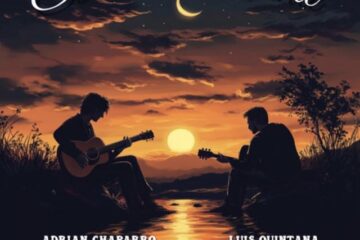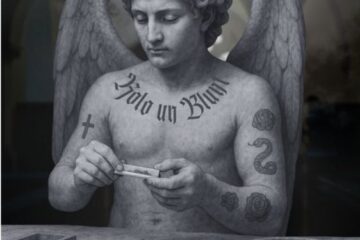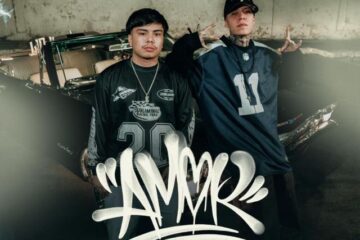By Lechelle Barron
The African American Museum in Philadelphia held recently an opening reception for the exhibit Drapetomanía: Grupo Antillano and the Art of Afro-Cuba, to showcase the work of Afro-Cuban artists in celebration of Black History Month. This exhibit will be on display through March 20, 2016.
The exhibit was presented at the Centro Provincial de Artes Plásticas y Diseño in Santiago de Cuba and was reviewed as “one of the best visual arts exhibits of the last few years in Santiago de Cuba.” Santiago de Cuba is the second largest city in Eastern Cuba, a section of Cuba where the largest black population resides in the country. Drapetomanía is an exhibit that pays homage to the sixteen Afro-Cuban artists of Grupo Antillano, and the twelve contemporary artists that shared the same views that Grupo Antillano expressed thirty-five years ago. “As an intellectual and curatorial project, the exhibit offers a fresh and alternative look at the “new art of Cuba” through the work of artists who have been concerned with issues of race, history, and identity,” said de la Fuente, curator of Drapetomanía and a Professor of Latin American History and African American Studies at Harvard. “It reassesses the importance of Grupo Antillano by linking their work with that of a new generation of Cuban artists. Thirty-five years after its creation, Grupo Antillano continues to assert, as the late Fernando Ortiz used to say, that without the black, Cuba would not be Cuba.”
“They wanted to recreate the Caribbean and African foundations of an authentic Cuban culture. During its five years of existence, Grupo Antillano articulated a new vision of Cuban culture through the visual arts,” said de la Fuente. “This vision was popular, radical, Caribbean, Maroon, African revolutionary. They did not want to promote a new artistic concept, but rather sought to highlight the centrality of Africa in Cuban culture and to debunk dominant narratives that equated Cuban progress and modernity with European influences. Grupo Antillano engaged the support of a large group of collaborators and created a vibrant Afro-Cuban cultural movement, among their collaborators were key figures in Cuban art.”
The title of the exhibit, Drapetomanía, derived from the Greek drapetes (escape, or run away) and mania (disorder, or mental illness), the term is in reference to an alleged disease described by a slave physician in the plantations of Louisiana. The main symptom of this disease was the slaves’ irrepressible and pathological urge to flee or be free.
Some of the Afro-Cuban artists of Grupo Antillano featured in this exhibit are: Esteban Ayala Ferrer, Manuel Couceiro Prado, Ever Fonseca Cerviño, Manuel Mendive Hoyo, Clara Morera Cabrera, Miguel de Jesús Ocejo and Rafael Queneditt Morales. Their collection of art pieces also include descriptions that tell the story and the inspiration behind each artists’ creations.
Rafael Queneditt Morales, founder and director of Grupo Antillano, showcases his
96 x 70 sculpture titled Resurrección (Resurrection), one of the biggest pieces of artwork in the exhibit. “I use my art to communicate my Cuban culture and identity, which have been strongly influenced by my African heritage,” said Queneditt Morales.
Clara Morera Cabrera, a painter, whose work is also on display, created a unique 42 x 64 piece titled El Regreso del Santo Pájaro (The Return of the Holy Bird). “I don’t have projects. I have needs. Painting is so necessary for me that I can get hysterical and go crazy if I spend too much time without painting or drawing, or without embroidering,” said Morera Cabrera. “Normally when nothing comes to mind I prepare little bits of canvas and draw on them or embroider them.”
Ever Fonseca Cerviño, a painter, sculptor and ceramist, crafted an intriguing 63 x 81 art piece named Familia en el charco (Family on the Pond). “Rural culture is in my origin, it is my birthplace, my meaning and source of life,” said Fonseca Cerviño. “It is my form of expression, of communication, that is how it comes to me, it arrives and I give it back, natural, the result of an encounter between the nature’s creative expressions of fresh fruit, that reveal the mysteries of the jungles’ darkness, latent forms that speak about us.”
Manuel Mendive Hoyo, a multifaceted artist, who has received numerous awards in Cuba and in Europe, includes various art forms such as: drawing, painting, body painting, wood carving and sculpture in his artwork. In this exhibit, he showcases a 70 x 76 piece titled Serie Cabezas (Head Series). “The elements of Afro-Cuban culture are a stimulus and sustenance for my larger discourse on death, life, and all there is in them: good, evil, and the most beautiful moments, to know everything that is inside us,” said Mendive Hoyo. “I live with my ancestors and my gods. Love live the world, Ashé.”
Miguel de Jesús Ocejo, a self-taught artist, created a multi-colored 46 x 37 art piece in this exhibit titled Ancestrálica de los fósiles (The Ancestors of the Fossils). “One of our main roots, the African, for example, is considered from a holistic perspective. I’m looking for that point of view that is all encompassing and interprets, rather than recounting an anecdote or a specific fact,” said Ocejo. “And if we use colors that might be distinctive attributes of a diety, they are added to a work of art in which the imagination soars to create another reality,” he adds.
Esteban Ayala Ferrer, a graphic designer, who has received international recognition for his work in Germany and Russia, designed a 13 x 19 black and white poster, in this exhibit of Grupo Antillano. “The graphic designer Esteban Guillermo Ayala Ferrer, brought his experience as artistic director and designer to the exhibitions of Grupo Antillano,” said Ramos Cruz, an art historian. “In the history of Cuban graphic design Esteban Ayala’s work represents the transition and the fundamental connection between the approach to graphic design in the United States and the solid training in design that he received in Germany. In his own way he linked the classic European tradition to the dynamic modernism of North American graphic design.”
Manuel Couceiro Prado, an artist specialized in Afro-Cuban art, created an unnamed 45 x 64 art piece in the exhibit titled Sin título (Untitled). “In the 1940s Couceiro was in the creative group that assimilated the discovery, made by Fernando Ortiz and other researchers of the African side of our culture,” said López Oliva, a Cuban art critic and painter. “From that point on they produced images of deeply native significance and poetic expressiveness by using the formal elements of international art, both representational and abstract, along with the legacy of the first generation of modern Cuban painters, they produced visions manifesting our mestizo condition, the symbols and characteristics by which Cuban culture was part of Caribbean culture.”
“Drapetomanía argues, without hesitation, that the “new art” that Grupo Antillano produced in the late 1970s and early 1980s is part of what we have come to know as new Cuban art,” said de la Fuente. “I hear, or more precisely, see echoes of Grupo Antillano in the work of these contemporary artists.”




